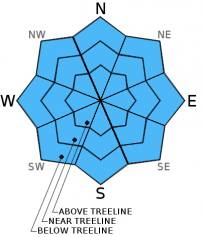| Wednesday | Wednesday Night | Thursday | |
|---|---|---|---|
| Weather: | Sunny | Clear then becoming partly cloudy | Partly cloudy |
| Temperatures: | 42 to 49 deg. F. | 27 to 33 deg. F. | 43 to 50 deg. F. |
| Mid Slope Winds: | Northwest | Southeast becoming variable | West |
| Wind Speed: | 10 to 15 mph with gusts to 25 mph | 10 to 15 mph becoming light overnight | 10 to 15 mph |
| Expected snowfall: | 0 | 0 | 0 |
| Wednesday | Wednesday Night | Thursday | |
|---|---|---|---|
| Weather: | Sunny | Clear then becoming partly cloudy | Partly cloudy |
| Temperatures: | 39 to 46 deg. F. | 23 to 30 deg. F. | 40 to 47 deg. F. |
| Ridge Top Winds: | Northwest | North shifting to the west after midnight | West |
| Wind Speed: | 20 to 30 mph with gusts to 50 mph | 25 to 30 mph with gusts to 45 mph decreasing to 15 to 20 mph with gusts to 30 mph after midnight | 15 to 25 mph with gusts to 35 mph |
| Expected snowfall: | 0 | 0 | 0 |
























